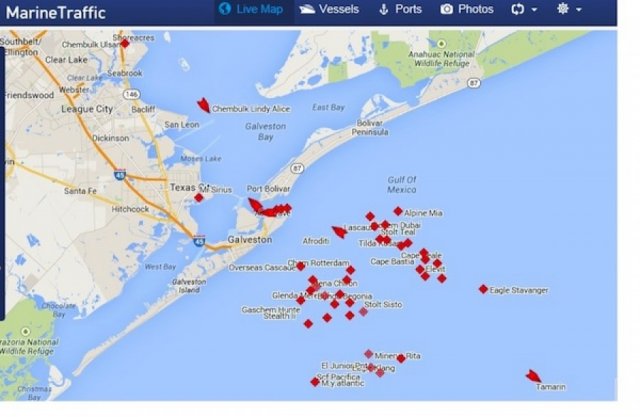Virtual Vessel Arrival Systems at Ports Improves Air Quality and Saves Fuel
On this page:
- Overview
- How It Works
- Key Advantages of Virtual Vessel Arrival Systems
- Implementation Considerations
- Cost and Savings Components
Overview
Ocean-going vessels can experience significant delays entering ports, resulting in increased fuel consumption and emissions while they idle at anchorage. Virtual vessel arrival systems offer a low-cost strategy to reduce these emissions by informing vessel operators of expected delays and aligning arrival times with berth availability. Virtual vessel arrival can be applied to any size and type of port, although larger ports with traffic congestion problems will benefit the most from adoption.
See the fact sheet on Port Operational Strategies: Virtual Vessel Arrival (PDF) (March 2021, EPA-420-F-21-009) for more information.
How It Works
When a port expects a delay for an arriving vessel, the virtual vessel arrival system administrator contacts the vessel en route and advises the operator when a berth will be available. The vessel operator can then determine optimal speed and routing, accounting for forecasted weather and ocean currents. When the vessel arrives at port, berthing wait times can be significantly reduced or eliminated altogether.
Key Advantages of Virtual Vessel Arrival Systems
- Reducing vessel wait times and engine use at anchorage improves air quality and health outcomes for nearby communities and port workers (see example emission reduction calculation using virtual vessel arrival (PDF) (March 2021, EPA-420-F-21-009)
A study of the Port of Los Angeles found between five and ten percent of ocean-going vessel emissions at the port came from anchored vessels. - Vessel operators typically travel at full speed to destination ports. Knowing about berthing delays in advance allows them to reduce their speed, resulting in fuel savings and emissions reductions en route.
- Fewer vessels anchored in close proximity outside ports may result in fewer collisions.
- By managing vessel arrival times more efficiently and enhancing logistics communication, virtual vessel arrival systems can improve port and regional freight system efficiency, saving time and money for ship operators and charterers.
Implementation Considerations
- Virtual vessel arrival systems require more accurate dockside planning.
- Implementation may also require substantive changes to incentive structures for ship operators because entry at congested ports is currently generally granted on a first come, first served basis, encouraging vessels to reach the port as quickly as possible.
- Additionally, contract terms often prioritize pre-determined port arrival schedules and may need modification to incentivize speed reductions.
Cost and Savings Components
- Capital costs include enhancements to existing vessel traffic monitoring and scheduling systems and communication systems upgrades.
- Operational costs should be limited to ongoing labor costs such as additional staff time needed to administer the system and training for affected stakeholders.
- Cost savings can be realized from the following:
- Reduced fuel consumption during transit and anchorage,
- Potential reduction in vessel collisions and the associated repairs and legal fees resulting from fewer vessels in the port area.
- Reduced demurrage fees for delayed cargo delivery due to shorter anchorage times and improved dockside efficiency;
- Vessel operational cost savings due to reduction in total voyage time from origination to destination port if the vessel operator chooses a later departure time to avoid delays at the destination port.

